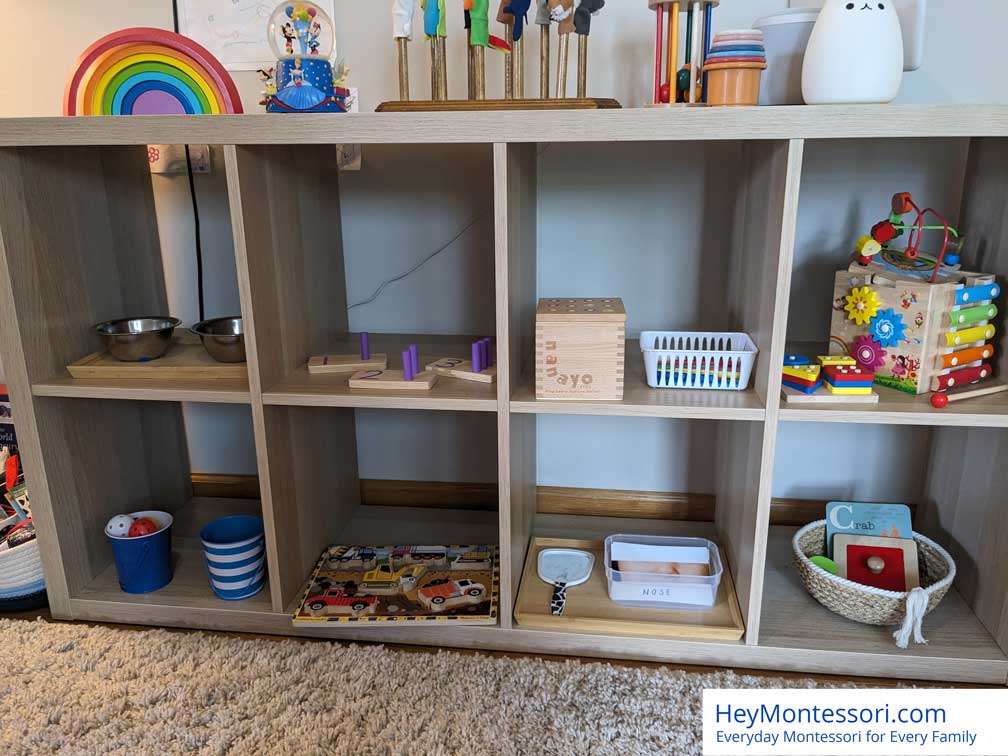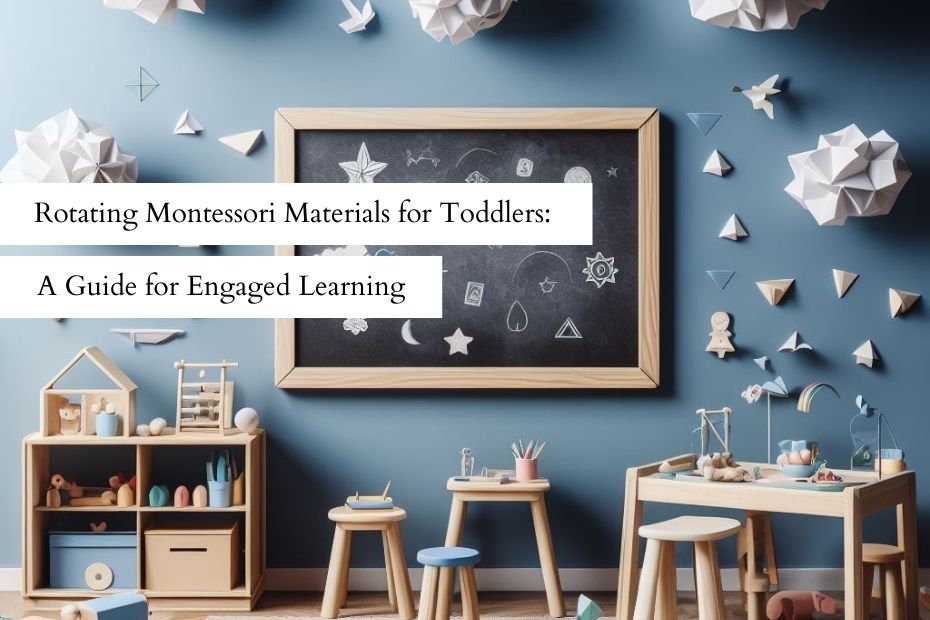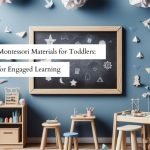Hey Montessori! Bringing you another slice of our Montessori journey today.
Today, we’re diving into a topic that is both essential and exciting for parents and educators alike – Rotating Montessori Materials for Toddlers.

This practice is more than just keeping our little ones busy; it’s about strategically nurturing their growing minds with a constantly evolving learning environment.
Whether you’re a seasoned Montessori practitioner or new to this approach, our guide is designed to help you understand the importance of material rotation, how to select appropriate items, and how to effectively organize and update your toddler’s learning space.
So, join us on this enlightening journey to create a stimulating and nurturing educational experience for your toddlers.
Understanding Our Audience: A Community of Learners
The Essence of Our Montessori Community
I’m thrilled to connect once again with our vibrant community of parents, educators, and caregivers. You are the heartbeat of our shared mission, each contributing uniquely to our collective journey in homeschooling and Montessori education.
Your dedication to nurturing the potential of our little ones is not just admirable but forms the cornerstone of our community.
Together, we’re not just partaking in an educational endeavor; we’re weaving a tapestry of lifelong learning and growth.
Celebrating Our Collective Efforts
Every story you share, every challenge you overcome, enriches this tapestry.
Remember, in this beautiful journey of Montessori education, we are allies, each playing a pivotal role in shaping a nurturing and stimulating environment for our children.
Your engagement and feedback are not just welcomed but are integral to our shared growth.
The Why: The Power of Material Rotation
Understanding the Need for Rotation
As we delve into the practice of rotating Montessori materials for toddlers, it’s vital to understand its essence.
Why is rotation important? From my dual perspective as a Montessori teacher and a mother, I’ve seen how toddlers are innately driven by curiosity and the desire for new challenges.
Yet, familiarity can sometimes lead to disinterest.
I observed this with my own child, who, after a few weeks with the same materials, began to show signs of disengagement, indicating a need for a change in his learning environment.

The Impact of Material Rotation
This need for change is not just about combating boredom.
It’s about continuously stimulating their growing minds, introducing new concepts, and fostering an environment that adapts to their evolving needs.
The rotation of materials serves as a catalyst for renewed interest and learning, keeping the educational journey both exciting and developmentally appropriate.
Choosing the Right Materials: A Guide for Parents and Educators
Criteria for Selecting Materials
The selection of Montessori materials for toddlers is a thoughtful process.
The key lies in choosing items that not only align with Montessori principles but are also suitable for their developmental stage.
We intermix both work material and play materials. Often times, one can interact as both. From motor skills to counting skills, it’s easy to come up with new and fun ways to keep your kids engaged.
For toddlers up to 2 years old, the focus should be on materials that are simple, engaging, and, above all, safe.
Recommended Materials
I have curated a list of some of my favorite materials, available on Amazon.
This range includes sensory balls, basic puzzles, and wooden blocks – each serving as a tool for exploration and learning, rather than mere playthings.
- Nanayo 4-in-1 Object Permanence Box
- Wooden Sensory Bin
- Counting Peg Board from Montessori & Me (Great company)
These materials are designed to engage multiple senses, encourage problem-solving, and promote motor skill development.
Organizing with the 6-Cubby Shelf: Practical and Aesthetic
The Utility of the 6-Cubby Shelf
In our home, the 6-cubby shelf has been a revolution. It’s perfectly sized for toddlers, promoting independence by allowing them to see and choose their materials.
But this shelf is more than a storage unit; it’s a carefully thought-out presentation of learning opportunities, organized and accessible.
Structuring the Learning Experience
Each cubby can house different types of activities, from language to practical life skills.
This arrangement not only makes selection easier but turns the act of choosing into a learning experience itself.
When and How to Rotate: Keeping It Fresh and Developmentally Appropriate
Scheduling Material Rotation
I advocate for a monthly rotation schedule. This frequency strikes a balance between providing variety and maintaining a sense of consistency.
It’s crucial to adapt the materials to your child’s growing skills and interests, making this an ongoing, responsive process.
Adapting to Your Child’s Needs
Remember, the essence of material rotation lies in observation and responsiveness. Pay attention to your child’s interests and developmental stage, and let these observations guide your choices.
This approach ensures that the learning environment remains both stimulating and appropriate.
Practical Tips for Effective Material Rotation
Strategies for Success
- Observe Your Child: Keep a close watch on their preferences and aversions. This observation will be your guide in choosing and rotating materials.
- Involve Your Child: Even young children can have a say in the rotation process. This involvement fosters a sense of independence and decision-making.
- Organize Thoughtfully: Group similar materials together, such as sensory items in one cubby and puzzles in another, for easier navigation.
- Keep a Rotation Log: Maintain a record of the materials introduced and your child’s response. This log is invaluable for tracking progress and making informed decisions.
The Role of Environment: Lighting and Shelf Placement
The Importance of Lighting
The placement and lighting of the shelf can significantly affect engagement.
Our experience taught us that direct natural light makes the materials more inviting and accessible.
Ensure that the shelf is positioned to optimize light exposure, creating an inviting and conducive learning space.
Engaging with Our Community
Your Experiences and Insights
Now, I turn to you, our valued community.
How do you approach material rotation for your toddlers? Share your challenges and triumphs.
Your experiences are a treasure trove of wisdom for all of us, enriching our understanding and approach to Montessori education.
A Call to Share and Grow
Thank you for being part of this exploration into the world of rotating Montessori materials. I hope this post not only inspires but also offers practical guidance for your journey.
Don’t forget to explore our recommended materials on Amazon for ideas.
Together, let’s continue sharing, learning, and growing, making each day a step forward in our children’s journey of learning and discovery.

